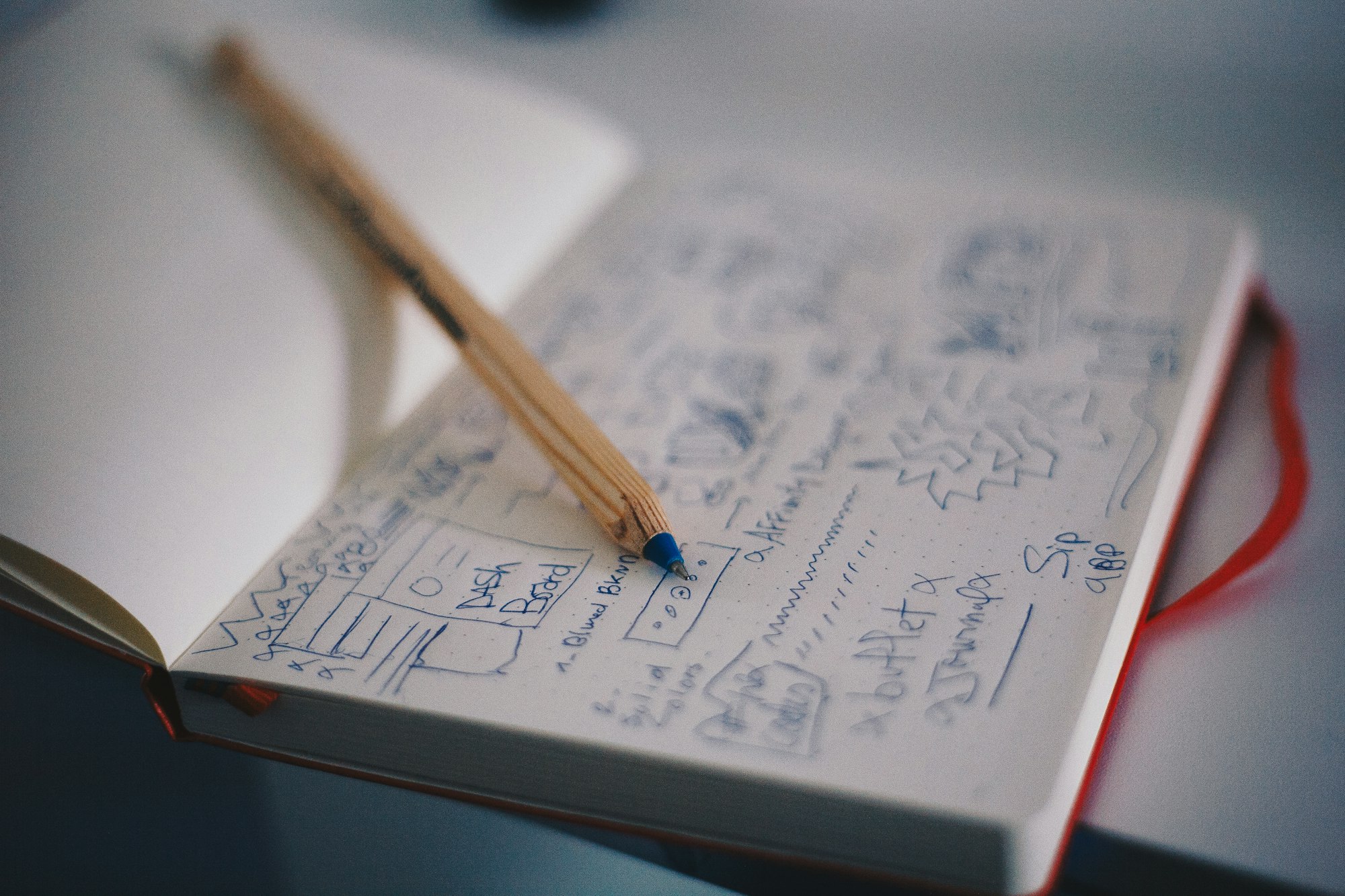The difference between low-fidelity and high-fidelity design prototypes

Learn how low fidelity and high fidelity designs differ from one another and when to employ each.
When talking about design assets, designers frequently use the phrase "fidelity."
This term describes the level of complexity and functionality present in the design. The appearance, interactivity, and content of fidelity can differ. The fundamental components of the final design are often present in low fidelity designs, but high fidelity designs seem as similar to the final design as possible.
We examine the differences between low and high fidelity in this post to help designers decide when to utilize low fidelity prototypes and when to use high fidelity ones.

Low fidelity: what is it?
One of the most well-known proverbs in design is "A picture is worth a thousand words." It simply means that a single still image can express extremely deep or complex information. Low fidelity (lo-fi) designs are the first iteration of a future product and assist the team in assessing design concepts and ideas. Low fidelity design is characterized by its simplicity and speed of creation.
How low quality design appears and functions
Only the barest visual nuances that aid team members in understanding the concept are included in low resolution design files. As an illustration, the design of a mobile app screen may resemble a combination of text and boxes that help users grasp the screen's layout, content, and operation. Before settling on a particular strategy, the product team can test design concepts and user flows thanks to low fidelity design.
Low fidelity design can be produced digitally or on paper (for example, paper sketches and paper prototypes) (i.e., using prototyping tools like Balsamiq, Sketch, or Invision).
When to employ low fidelity design
For the initial stages of the product design process, low quality design is ideal (during the ideation phases). When a team has a lot of ideas they want to explore quickly, they will produce low fidelity designs. During a brainstorming session, team members can produce low fidelity concepts in real time. They may, for instance, draw a certain app screen on a piece of paper or a whiteboard.
Testing the information architecture of a potential product is also a good use for low fidelity design. Team members can create low-fidelity user flow prototypes to show how a user would utilize a tool or product. You will be able to tell whether the navigation plan the team decides to utilize is simple and reasonable as a result.
Advantages and disadvantages of low fidelity design
Few important advantages of low fidelity design are as follows:
- Make it simpler to assess product concept evaluation: Viewers may become distracted by aesthetic aspects like color and style choices. Lo-fi designs can assist draw attention to the central idea because they have the fewest visual features possible.
- Low fidelity designs can be made by anyone: You don't need to have any special abilities. You can imagine what a future product will be like as long as you have paper and a pen. Consequently, non-designers can take part in the design process.
- Quick creation: Live brainstorming sessions might result in the creation of lo-fi designs.
- Lo-fi designs are simple to modify: This relieves designers of some of the pressure. Team members are more open to giving their thoughts on low fidelity designs because they imply that they are incomplete.
However, low fidelity design has certain drawbacks as well:
- Usability testing is not appropriate for lo-fi design since it takes some level of imagination to envision how the final product will seem and function. Low fidelity prototypes are therefore inappropriate for usability testing with actual or hypothetical users.
- Lack of interaction dynamism: Low fidelity design assets can feel lifeless because they lack animations for transitions or interactions.

High fidelity: what is it?
High fidelity (hi-fi) design closely resembles how a product would turn out after being designed. High fidelity assets look and function as closely as feasible to the final product thanks to content, visual styles, and animated transitions.
How high-fidelity designs appear and function
Typically, interactive prototypes that are production-ready and pixel-perfect serve as representations of high fidelity designs. They are virtually as visually detailed as the finished result.
The majority of the time, coding or digital prototyping techniques are used to develop high fidelity designs. For instance, you can use a tool like Quarkly to design a website and produce a high fidelity prototype.
High fidelity designs: when to utilize them
The later stages of the product design process are usually when high fidelity designs are produced. A product team increases the level of fidelity to better comprehend the look and feel of a future product when they have a firm understanding of what they want to produce. For the engineering team that will code the design, hi-fi prototypes serve as a source of truth.
High fidelity design assets provide you the chance to determine whether your design functions as a cohesive whole, which makes them useful for assessing visual design and aesthetics.
High fidelity design's advantages and drawbacks
A wide range of important advantages of high fidelity design include:
- Describe the appearance and feel of a finished product: Design can be assessed from both a functional and an aesthetic perspective. Because stakeholders will clearly understand how a finished work will look, they will be more inclined to give it the go-ahead because of this quality, which makes hi-fi artifacts more presentable to them.
- Test animated transitions: Hi-fi assets enable teams to evaluate a product's motion design (i.e., visual transitions between individual states, micro animations, etc.).
- Tests for usability are appropriate for: Participants in the tests won't be able to tell the difference between a high-end prototype and the final product. As a result, when test subjects interact with high fidelity designs, their behavior will be more natural, and the outcomes of usability testing will closely mirror user interactions with genuine products.
High fidelity prototypes, however, also have a few significant drawbacks:
- High quality prototypes require more time to build than low fidelity designs, both during creation and modification. It also takes a lot longer to make adjustments to these designs.
- High fidelity prototypes are generated utilizing prototyping or coding methods, which call for specialized knowledge and equipment. These designs demand visual design expertise as opposed to low fidelity designs, which anyone may do.

Increasing fidelity from low to high
A common issue in product design is choosing the incorrect level of authenticity. One of the typical errors that many product designers make is producing high fidelity artifacts too early in the process. This wastes a team's valuable time and resources on producing items that aren't very useful to the intended audience.
The process of turning low fidelity designs into high fidelity ones is a part of product design. Low fidelity can help the team to first properly comprehend what they want to build. The level of accuracy can be raised as soon as everyone in the team is on board with the design direction. And keep in mind: It's okay to have low fidelity in some aspects of a product and high fidelity in others. It's not always required to design all assets in high fidelity.

